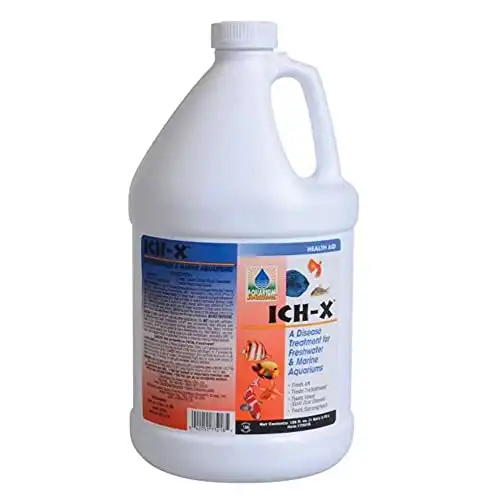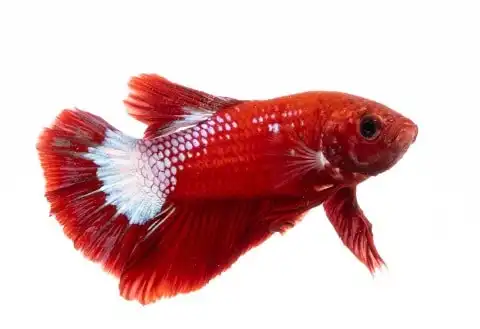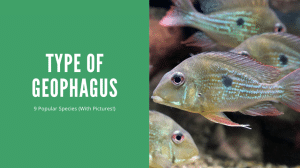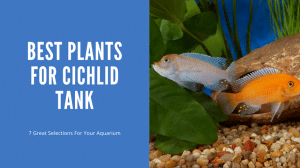Thank you for visiting! By the way… any links on this page that lead to products on Amazon and other stores/partners are affiliate links Aquarium Store Depot earns a commission if you make a purchase.
Does your betta fish have ich? Fishkeepers all over the world deal with this common illness at one time or another but the good news is that you can save your fish. Ideally, you should always consult a veterinarian or aquarium expert for an accurate diagnosis and advice on a treatment plan. However, vets who specialize in aquarium fish are difficult to find.
In this guide, I’ll give you some advice on how to diagnose and treat ich on bettas, and run through some practical tips on how to keep ich out of your tanks.
Let’s get started!
Key Takeaways
- Ich is a common illness in betta fish that typically causes white spots on their skin and fins.
- It is a highly contagious parasitic infection that is fatal to the host fish if left untreated and is easily spread to other tank mates.
- Ich can be treated using various medications, aquarium salt, and heat treatments. Medications are available from pet stores, veterinarians, and online.
- Treating aquarium fish without consulting a veterinarian is always risky. Seek assistance if you are not confident in your diagnosis or treatment plan.
What Is ‘Ich’?
Ich is a protozoan (single-celled) parasite known scientifically as Ichthyophthirius multifiliis. It is a common infection of Betta fish/ Siamese fighting fish that causes a condition commonly known as white spot disease.
Ich is fatal if left untreated, so this is an infection that you will need to treat right away. Fortunately, it is often curable if you catch it on time. I’ll cover some treatment options a little later in this guide, but let’s start by getting to know more about the parasite.
Ichthyophthirius multifiliis Lifecycle
Ich parasites cannot survive without a freshwater fish to feed on, and their life cycles includes three stages. Understanding this lifecycle is essential for curing your fish and making sure it does not become reinfected.
Continue reading to learn about the three major life stages of the ich protozoan.

- Trophont – The Feeding Stage
During the trophont stage, the ich parasite is actively feeding on your fish’s tissues. Unfortunately, the parasite is protected by your betta’s body during this stage, so they are not affected by medicines and other treatments.
- Tomont – The Reproductive Stage
Once the ich parasite has finished feeding, it leaves the fish’s body and sinks down to the bottom or attaches to an object in the water. The tomont covers itself in a protective covering called a cyst and then multiplies into hundreds of new parasites. Yikes!
Experts from the Southern Regional Aquaculture Center report that ich can occasionally form tomonts under the host fish’s mucus layer, which makes them much harder to control.
- Theront – The Infective Stage
The developing tomites are still safe from treatment within their protective cyst, but after a few days they hatch out and go in search of a new host. These free swimming parasites are called theronts, and they are not immune to treatment.
The theronts must find a new fish to feed on to survive and start a new cycle. Therefore, any parasites left in a tank without live fish will eventually die.
How Does it Spread?
Ich is highly contagious. It can spread between fish or be introduced on plants or in water that is shared between aquariums. Your betta fish may already have ich when you bring it home from the pet store, or it may catch the parasite from any new fish you add to the tank.
Diagnosis

Accurately diagnosing an ich infection requires a microscope and a trained expert, although this widespread freshwater fish illness causes some common symptoms that are usually visible to the naked eye. Let’s take a look at some of the typical signs of ich and symptoms in betta fish.
Visual Signs
An ich infection presents with white spots on your fish’s skin and fins, which is why this parasitic infection is often called white spot disease.
It often shows up first around the gills and fins, but as the infection progresses you may see white spots on any part of the body, including the eye. These white spots are usually quite spread out, rather than clustered in small areas.
Ich also causes stress which can cause clamped fins and loss of color.
Behavioral Clues
Your betta fish may show other symptoms like a lack of appetite and low activity levels. Infected fish will also try to scratch their skin against the substrate or other objects in the aquarium. This is known as flashing and it’s another common sign that your betta fish has ich.
Treating Ich on Betta Fish
Where, when, and how to tackle this common fish disease are questions I get frequently. Let’s break down each in detail.
Where To Treat
Your first consideration before starting treatment is choosing where to treat your fish. If you have a betta only aquarium without any other animals or live plants, you may simply treat your fish in its tank. However, you may need to move your fish to a separate hospital tank for treatment if you have other animals that are sensitive to ich medications.
It may also be helpful to move your betta into a smaller hospital tank if your main aquarium is very large. That will give you the freedom to clean the tank more thoroughly and reduce the amount of medication you need to apply.
Ich is highly contagious, so you should treat all the fish in your aquarium at the same time, even if they don’t look sick.
When To Treat
Act fast and begin your ich treatment as soon as possible. This will improve your chances of saving the host fish and preventing the parasite from spreading to other fish in the tank.
The parasite takes less than a week to complete its life cycle at temperatures in the mid to low 80s, so you can treat this condition relatively quickly in a heated betta aquarium. However, ich cannot be treated during its feeding and reproductive stages so make sure to continue treating for several days to ensure that all the parasites are destroyed.
How To Treat
Treating your betta fish with a commercially prepared ich medication is the preferred method and one you can do yourself if you’re comfortable with the process. Some sources state that ich can be controlled through heat treatments alone, and this could be a good option if you don’t have access to medication.
Continue reading to learn more about these methods.
Treating with Medication
Step 1. Clean the tank
Start by cleaning your tank thoroughly and doing a large water change to improve your water quality and suck up any free swimming parasites in the water. Use a gravel vacuum to suck up as much waste from the substrate as possible. This helps to remove reproductive tomonts before the free swimming parasites can emerge.
Next, clean your filter media in old aquarium water and remove any activated carbon media that may soak up your chemical treatments.
In their guide to Ichthyophthirius multifiliis (White Spot) Infections in Fish, experts from The University of Florida’s IFAS Extension recommend cleaning the tank every second day when treating ich in aquarium fish. Just be sure to treat the new aquarium water with a dechlorinator and warm it to the correct temperature to avoid stressing your fish.
Step 2. Raise the temperature
The next step toward treating ich in betta fish is to heat up the tank. Raising the temperature of the aquarium slightly does not necessarily kill the ich parasites, but it does speed up their lifecycle, which is important because they can only be destroyed during the free-swimming stage.
Betta fish live in tropical climates, but they cannot survive in very hot water. A temperature of 82 – 86 degrees Fahrenheit is generally recommended for betta fish ich treatment. Set your heater to this temperature and use a thermometer to ensure that your water remains within this temperature range.
You may notice your fish breathing up at the surface after increasing water temperature. Increase oxygenation in your tank by aiming your filter outlet toward the surface or, even better, run an airstone.
Step 3. Chemical treatment
Treating ich in betta fish typically involves applying a chemical treatment at regular intervals. The recommended dosages and intervals will vary between products, so always follow the instructions and dosage of your chosen medicine.
When measuring out the dosage, keep in mind that your tank does not only hold water. A 10-gallon tank may hold just 9 gallons, depending on the amount of substrate and decorations you have added.
If your fish do not recover after treatment, you may be dealing with a different type of infection. In that case, consult a veterinarian for advice because some other conditions such as epistylis can also cause white spots on tropical fish.
Choosing Ich Medicine
There are many ich medications on the market, including popular products like Ich X, Interpet Anti-White Spot, and API Liquid Super Ick Cure. The products may be in liquid or tablet form, and their use and dosage varies.
Ich-X is the best all around medication when it comes to treating Ich
The active ingredients in most ich medications include:
- Malachite green
- Formalin
- Copper Sulphate
- Aquarium Salt
Method 2 – Heat Treatment
According to experts from the University of Florida IFAS Extension, it is possible to treat ich in freshwater aquariums by gradually switching between colder water and higher temperatures.
Their method involves gradually raising the temperature in the tank to 90 degrees Fahrenheit and keeping it there for a full day or 24 hours. The temperature is then gradually lowered to 70 degrees and held there for 48 hours. This sequence should be repeated for two weeks and combined with regular water changes.
However, there are risks involved when changing water temperatures in your betta tank. Betta fish are pretty hardy, but they prefer temperatures between about 75 and 82 degrees Fahrenheit for long-term care. Lows of 70°F and highs of 90°F are outside of their comfort range and will cause them additional stress.
Preventation
Many new fish keepers discover that their fish is infected with ich parasites in the first few weeks after adopting their new betta fish. Unfortunately, you can’t always tell if your fish is infected when you pick it out at the store, but there are some steps you can take to prevent ich from infecting your pet fish.
Buy Right
First off, always buy your fish from a reputable breeder, trusted online retailer, or fish store that takes pride in their livestock. Ask the salesperson if they’ve had any problems with illness recently, and look around for any signs of illness in their tanks. Things like torn fins, heavily breathing, cloudy eyes, or white spots are clear signs. Fish should be eating before you purchase them.
Use Coupon Code ASDFISH at Checkout
Betta Fish are one of the most beautiful varieties of freshwater fish available in the hobby. Easy to care for with plenty of varieties!
Quarantine
Ich parasites cannot infect your tank from the air but there’s always a chance of bringing them in with new fish or aquatic plants. Experts from the University of Florida Extension suggest you quarantine new fish for at least a month before adding them to your tank. That way you can keep an eye on them and treat any problems before they spread to your other pets.
Setting Up A Quarantine Tank
You can use a plastic container or a glass aquarium as your quarantine tank, but you should run a heater, filter, and airstone to keep your new fish comfortable during this time.
A new quarantine tank will not be cycled, which can cause dangerous ammonia spikes in the water. Use your water test kit or test strips to monitor water quality and perform water changes when necessary.
Contain The Infection
Be careful not to spread the infection if you have more than one aquarium. The parasites can be introduced on equipment like gravel vacuums, aquarium nets, or aquascaping scissors. You should also avoid dumping affected water into or tanks or contaminating or tanks with equipment that has been in the diseased tank. Never dump treated water into local waterways or rivers.
FAQs
How do you treat ick on a betta fish?
A number of medications are available for the treatment of ich on freshwater fish. These products should be used carefully by following the directions on the packaging. You can speed up the treatment process by heating the water in your betta fish tank to 82-86 degrees Fahrenheit, and remove some of the parasites by performing water changes.
Is Ich fatal to betta fish?
Betta fish ich is a highly contagious protozoan parasite that is generally fatal if left untreated. However, fish owners can save their pets if they catch the condition early enough and use appropriate medications and treatments.
What does ick look like on a betta?
The most common symptom of ich in betta fish is small white spots that look like salt grains. Each white dot is the site where an external parasite is feeding on the fish, causing irritation and a small injury. Infected bettas develop other symptoms like clamped fins and a lack of appetite as the infection affects their immune system.
Why does my betta have a white spot on his head?
White spots on a betta fish are often caused by ich. However, a white spot on its head is likely not ich if the spot is larger or fuzzy. These big spots are usually fungal infections or parasitic conditions lie hexamita. Careful observation and taking photos to check with an experienced hobbyist or vet will help determine what it might be.
Can fish recover from white spot?
Yes, many fish including Bettas can successfully recover from white spot as long as you treat the condition and catch it early. If you do not treat the condition in time, it’s likely that further damage can be done to the point where a bacterial infection occurs which will ultimately kill your fish. However, in saying that, on the freshwater side of the hobby the outlook is typically good for fish to recover from an ich infection.
Why is my betta getting white spots?
Bettas get white spots from being stressed than the parasite infecting them. However, they cannot get infected if the parasite does not exist in the tank. To completely eliminate the chance of ich ever entering your system, you must quarantine all fish, inverts, and plants before they go into your tank. The reality though is that the vast majority of hobbyist will not do this, so keeping stress low and not introducing an already infected fish will lessen your chances.
Final Thoughts
Ich is a very common condition that affects betta fish and their tank mates in aquariums all over the world. It is a serious situation, and it can be really distressing to find your pet betta fish covered in tiny white spots. However, betta fish ich is curable, and many fish keepers choose to treat their pets at home with great success.
Remember to consult a veterinarian if you’re unsure about the diagnosis and treatment plan, and if you are going to treat your own pets, be sure to follow the instructions on the medication.
Have you treated betta fish ich in your aquarium? Share your experiences in the comments below!
- About the Author
- Latest Posts
I’m thrilled that you found Aquarium Store Depot! Here you’ll find information on fish, aquariums, and all things aquatics related. I’m a hobbyist (being doing this since I was 11) and here to help other hobbyists thrive with their aquariums! I adhere to a high quality Editorial Process and Review products with real life field usage and practical analysis.







